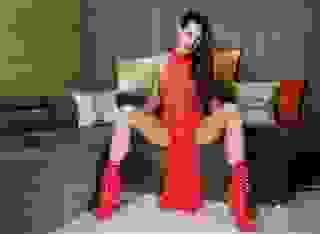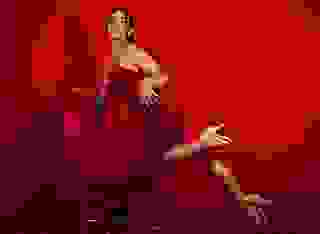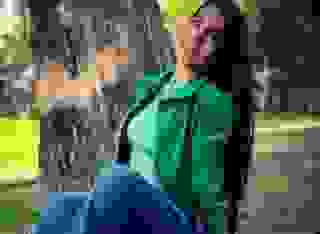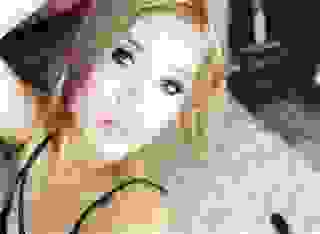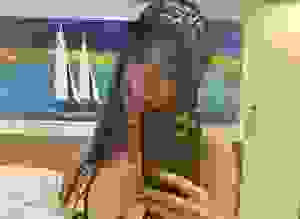- How To
- How to Punctuate Like a Pro
Note: You can change font size, font face, and turn on dark mode by clicking the "A" icon tab in the Story Info Box.
You can temporarily switch back to a Classic Literotica® experience during our ongoing public Beta testing. Please consider leaving feedback on issues you experience or suggest improvements.
Click hereWhat's the point? Other than the dot at the end of the sentence. Believe it or not, you already know a lot about punctuation. You read it every day and your brain remembers it a little, even if you don't. Trust me on this, I'm a total grammar geek. You know when it looks right and when it doesn't, but you may not always know why it's not right. Perhaps English isn't your first language and you just want to throw the dictionary at someone, preferably an English professor. You can try to hit me with it, but I learned how to duck. Maybe you just want to make things easier for your readers. Whatever your reason for skinny-dipping into my punctuation pool on an erotic site, welcome!
We're going to deal with a few primary pieces of punctuation and one that should be far more rare than it is around here. Each portion of this piece will be headed by the name of the punctuation in bold so you can find it easily without having to muck through a lot of reading that doesn't have anything to do with you.
You have to know a little grammar to know when to use what punctuation. I'm going to keep the grammar minimal, short, teeny-tiny. That way you don't suffer any more than you have to. Chances are, you already know these things, but you may not know their names. We're basically going to deal with just clauses and phrases.
Clauses are parts of a sentence, not just the things that come back to kick you in the ass after you signed a contract or bought insurance. They don't always prance around with elves (though the one in this sentence does) either. A clause is a group of words that has a subject and a predicate. The subject is what the sentence is about and the predicate is what the sentence does. There are four classifications of clauses, but we won't get into those. What we will get into are the two types of clauses. Yes, there's a difference. Yes, it's probably pretty boring. There are two types of clauses, an independent or main clause and a dependent or subordinate clause.
An independent clause can stand alone all by itself. Here's an example: “The traffic stopped". It has a subject, the traffic, and a predicate, stopped. More importantly it's a complete thought. The idea, notion, whatever is all there.
A dependent clause cannot stand on its own. It has a subject and a predicate, but it's not a stand-alone because the thought isn't complete. Here's an example: “When her skirt blew up". No, really, that's not a complete sentence. Think about it for a minute. If that was all by itself, you'd be wondering what made her skirt blow up and what the writer meant by “when". There's some missing information here. Put them together and you have a complete, compound sentence. The traffic stopped when her skirt blew up.
There are two quick ways to tell a dependent clause from a clause that's wearing the whole sentence bikini. One: look for a “time" or “it depends" word. When, after, sometimes, usually, if, because. Two: look for a gerund. A gerund is just a fancy word for a verb with an -ing whacked at the end. Looking, eating, smelling, seeing, being. All of that fun stuff.
Groups of words that seem to stand alone, but are missing either the subject or the predicate are called phrases. There are tons of these buggers in writing and they come in all shapes and sizes. The best way to recognize one is to look for a subject and a predicate. If one is missing, it's a phrase.
Well that was relatively painless. Or at least I thought so. C'mon, you can uncover your eyes now.
The period is the most common piece of punctuation you'll ever type. It's at the end of nearly ever sentence (except this one)! It also has a few more uses that might come in handy along the way.
The first thing is how to end a sentence. As you already may know, it goes at the end. Look at these sentences and you'll see the period in action. There is one point and it comes immediately after the letter preceding it. Then there is generally two spaces between the period and the sentence that comes after it. Sometimes there'll only be one space, but conventionally speaking, there are two. You'll notice that the first letter in the sentence following is capitalized. Easy enough. But to be a good Muffie, here are a few examples:
There is a period at the end of this sentence, too.
The period also works in with things like abbreviations. This is where it gets slightly trickier. As with the sentence, the period follows immediately after the abbreviation and then a space before the next word in the sentence. That's a single space, not two. Here are a few examples to help you along:
Dr. Pepper
I live in the U.S.A., but I like the U.K. and U.S.S.R. in the summer.
Note: Acronyms, abbreviations that are pronounced as words, do not have periods. Here's a few examples: modem (Modulater/demodulater), SEAL (SEa, Air and Land), ASAP (as soon as possible). Certain abbreviations, such as RCMP and FBI frequently aren't seen sporting periods, either.
If the abbreviation comes at the end of a sentence, there's a bit of a problem. How many periods? One or two? Just one! The sentence ender is the ender of the abbr. Cool, huh? C'mon work with me here. Here's an example for you:
(Sue me, I couldn't think of anything else.)
Ah! Another one of those murky questions, you noticed. Where, exactly, does the period go when you've got things like parentheses in the way? I'll deal with punctuation with quotation marks in that section.
When dealing with parentheses, the punctuation depends on how the parentheses are placed in the sentence. If they're mixed in with the sentence (like this) then you keep all the punctuation outside of the parentheses (even at the end). If you put them around an entire sentence, you put the punctuation inside of the parentheses. (Kind of like this.) Here are a few examples:
(I'm not too keen on copyright violations.)
You may have noticed that in some stories, there are strings of periods throughout the text. There really is a punctuation mark that requires more than one period. It's commonly known as the ellipses, which is covered in Section 8. Ellipses.
This is where things get complicated. Commas are used for so many things and you have to know some grammar. If you haven't already given it a once over, check Section 0. Grammar for a brief run-down of the grammar you'll need to know.
A Dependent Clause Does the Independent Clause in the Conga Line.
Sometimes they do that. What do I mean here? It's not self-explanatory? Great. Now I'm going to confuse everybody. In this case the dependent clause usually modifies the independent clause. That means that whatever the dependent clause is about, changes or explains the independent clause in some way. We call these adverbial dependent clauses, but you don't have to know that for the test.
Remember her skirt? And the traffic? When her skirt blew up, traffic stopped. Yep, that one! Traffic stopped is the independent clause. Yes, I know the other one has more words, but that doesn't matter. Traffic stopped tells you everything you need to know. However, the clause “When her skirt blew up" makes it even better because it tells you why traffic stopped. It wasn't something you needed to know, but it did make things a bunch more interesting. Oh just admit it, we already know you've got a dirty mind. You're here, aren't you?
Here are some examples:
If we ate lunch, I would still want dessert.
While running around the desk, I thought about letting the boss catch me.
Participial Phrases, Infinitives, and All That Jazz.
The jazz has a better beat, but we still must deal with the other two. We use them all the time, you know. Most of us don't even realize they have names. Probably don't care, either. For the purposes of our discussion, an infinitive is just a phrase that has some form of “to be" involved. There's more to it, but it's not necessary and would probably be really, well, dull.
A participial phrase is just one where a group of words showing action of some sort acts to describe something in the sentence. Like adverbials, these just really describe something about the rest of the sentence. When you use them, though, there should be a comma between the phrase and the clause.
Let's look at a pair of sentences. To have sex, you should probably be horny. Howling like a wolf at the moon, she had an orgasm. With these two sentences, you have a couple of independent clauses. “You should probably be horny" and “she had an orgasm". The first one has an infinitive phrase in the beginning, “to have sex". You'll notice that it's a linking verb, or a form of the verb be. Conjugation isn't just another dirty word! The second one has a participial phrase, “howling like a wolf at the moon". They both sort of describe the rest of the sentence; quite a bit actually, without being strictly necessary to the sentence.
Here are a few examples:
To have a cookie, the dog has to sit up and beg first.
Running through the trees naked, Jolene discovered she wasn't alone.
Tracing patterns on her belly, Sam botched his third attempt at a marriage proposal.
Gawd, commas take forever.
Parenthetical Expressions and You.
What? Parenthetical and no parentheses? Yes, these things really do happen. A parenthetical expression is just a word or group of words that really don't have much to do with the sentence itself, but you think it's important to be there. There are actually three ways to set off a parenthetical expression and the comma is the most common. The other two are the parentheses, of course, covered in Section 9 and the dash, covered in Section 7.
Transitional words are the most common parentheticals. Therefore, however, moreover, too, consequently, you get the picture. They should be set off by commas. By this, I mean that a comma should happen before and after the parenthetical. This is, of course, the way it goes. Naturally, if the parenthetical comes at the beginning, you only use one comma. If the parenthetical comes at the end you only use one comma, of course.
Also is the exception. You don't set that off unless you want it to be strongly emphasized. Generally, though, it's in a funky position in the sentence if you do want it to be just that important.
Parenthetical phrases and clauses of other varieties are more difficult to pinpoint in discussion. The only real way to tell if the phrase is parenthetical is to remove it. If the sentence makes perfect sense without it, use some commas when you stick it in.
Here are some examples:
She takes her clothes off, generally speaking, before bathing.
My mother's favorite song, done by Englebert Humperdink in the 70's, puts me to sleep.
He ripped her favorite panties, 2002 Victoria's Secret thongs, by accident.
When to use the comma v. the dash v. the parentheses? It's all a matter of degree and how many commas you've already used. If your sentence has commas in it already, use the dash for clarity. If the parenthetical phrase really disrupts the sentence, some do, use a dash. If the parenthetical phrase is a break in the action where the author speaks directly to reader, use parentheses. Why? Convention, mostly. It's what people are used to reading and it's the cues they're comfy with.
Are You Appositive About That?
An appositive is just another funky (we put the fun in funk!) word for adjectival phrase. Only more specific. An appositive basically just identifies another word. Huh? It tells the reader who or what you're talking about. For instance: Mary, Queen of Scots, was the bag lady I met on 7th street. The desk, the one my brother, the cheap bastard, gave me, fell apart. That's not too bad; it's almost like a parenthetical. Well it is, but it's a very special one. Let's have some examples!
Kris Kringle, Santa Claus to some, didn't like my idea that being good is being naughty.
The Word Series. Batter Up!
Ah, familiar territory. A series of words, a list if you will. If you've got a list of words, you separate them with commas. Simple! But wait. Do you or don't you put a comma before the "and"? Hang on while I get into my body armor, this is a total minefield to punctuationarians. The battles have been fierce and casualties have been heavy. Part of it depends on where you live. Most of it depends on what mood you're in when you learned this stuff. In my world, the comma always goes before the and in a list. In most places, you can get away with leaving it out. However, if you intend to write for publication, the best bet is to stick the comma in there.
Note: a list doesn't have to be just a list of things. It can be a list of activities, too. Even a list of what appear to be complete sentences (but aren't)! Here are a few examples:
He took one look at her stuff, almost fainted, screamed like a little girl, and ran into the night.
She chased him with the hot sauce, then ran back and got the Astroglide, finally caught up with him five blocks away, and beat him over the head with the dildo.
Noun Modification, Does It Hurt?
We modify nouns all the time in writing. We have to because plain nouns make you feel like you fell into a bad See Dick Fuck rerun. There's really only one way to modify a noun. No, you don't take it down to your local tattoo and piercing emporium. You use an adjective or an adjectival phrase. Why didn't I say that in the first place? Well, I don't really know. Yeah, yeah, yeah, Muff, we know how to use an adjective. What's that go to do with commas? I'm so glad you asked!
Sometimes we want to use more than one adjective to describe something. That dirty, rotten, no-good, piece of garbage dirtbag! She's got such a big, beautiful, large chest. It's a cedar chest, pervert. The reason why you have to put commas in there is to make sure that it's clear what word the adjective is supposed to be modifying. If you stick the commas in, you have a mini-list that all modifies the word at the end. If you don't, then the adjective modifies the word immediately following. Lemme guess, Whatchootalkin'bout, Muffis?
Let's look at two very similar examples. Bright, blue eyes. Bright blue eyes. They're the same words, but by whacking that comma in there, you've got two different meanings. No, really. In bright, blue eyes, both adjectives modify blue. She has bright eyes and blue eyes. In bright blue eyes, she just has eyes that are bright blue in color. Big difference. It's not that important in this example, but there are a lot of instances where it's imperative that you make sure you adjectives are modifying the correct word in the reader's mind.
Safe Sex: Make That Compound Sentence Wear a Conjunction!
When you want to mix it up in your paragraphs, you might stick two independent clauses, sentences, together as one. A little grammatical coitus. There's really two ways you can do that and only one of them involves a comma. You have to use a conjunction when you use a comma to separate two sentences. Why? Because you'll get a comma fault or comma splice error when you don't. In a human brain, no big, in a computer, watch it spit at you. Basically, the way it works is that you put in sentence one, the comma, the conjunction, and then sentence two. The most common conjunctions are and, but, and because.
So what's that in English? Well, it just says that if you want to stick two complete sentences together, you have to use a comma and a conjunction together. Let's take a not-so-quick look. Fred loved to eat grapes, but they gave him gas. Three really important things are happening here. Fred loved to eat grapes is a complete sentence. They gave him gas is, likewise, a complete sentence. Notice the comma and the but hooking them together. What if the second part wasn't a complete sentence? Then you don't need the comma, strictly speaking. Fred ate grapes every day but Tuesdays.
Some examples:
I usually go to the store once a week, but it was snowing so I stayed home.
He likes to eat tuna fish sandwiches, because it reminds him of his ex-girlfriend.
Oh my. Could it be? Is it? I'm going to faint here. We've come to the official end of the comma section. I left some stuff out, mostly how to use commas when you're talking mailing addresses and you've got names backwards. Everyone's heard the line, “My name is Bond, James Bond". Just go with the flow.
If none of this sinks in whatsoever, don't feel bad. Commas are the most difficult piece of punctuation to deal with and most of us do it wrong anyway. In some instances the line is fuzzy and in others it's all dependent on your region. However, there is one piece of advice that will almost always give you the correct answer. Read your sentence out loud; wherever you hear a pause, whack in a comma. Try it sometime.
Yes, people actually use these things! They're not that difficult to get a grasp of, though putting them into practice takes a little bit of getting used to. After all, we normally just whack in a comma and call it good. Heck, even the best-seller list is chock full of people who put in a comma when they should be using a semi-colon. However, it's on your keyboard for a reason, and it's not to make programmers happy. Um, don't ask.
You will need a little bit of grammar to get the semi-colon thing. You'll find all you need to know in Section 0. Essential Grammar. Unless you're familiar with clauses already, take a quick look. It's not long or too terribly painful. I promise.
Basically, there are three places you use a semi-colon. In sentences that are already full of commas, between independent clauses with no conjunction, and in places where you'd normally use a comma, but just don't want to.
The first one is easy enough. Sometimes we makes lists in a sentence where some or all of the listed things have more than one part. You have to separate those parts with a comma. As you can imagine, using commas to separate the list itself gets confusing. What's a part of the list? What's not? Well, in those instances, just use the commas to separate the parts of one item and a semi-colon to separate the list. Sometimes you'll have two independent clauses put together with the comma and conjunction, but you have commas in the clauses themselves. Use the semi-colon to separate the clauses instead of the comma. Generally speaking, when you have too many commas, put the semi-colon where the main or primary uses of the comma would be and leave the commas for the secondary parts of the sentence. Here's an example or two:
She bought a movie, The Dirty Dozen; three apples, Johngold; and a pizza, frozen.
Sam, the bartender, loved to drink beer; but his boss, Sammy “the Blade" Zymbowski, frowned on that during working hours
